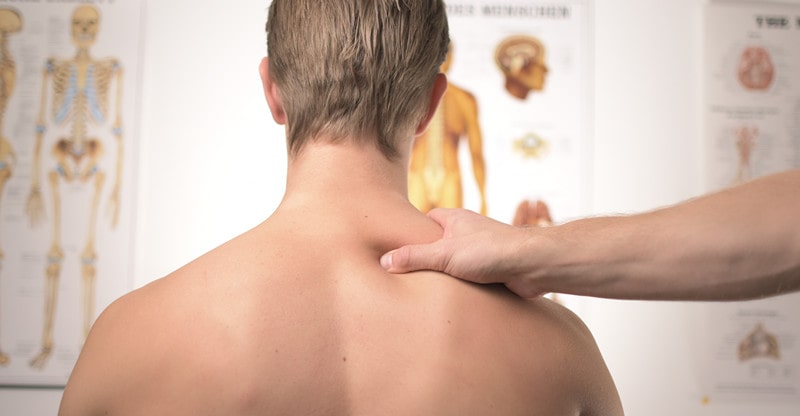8 Life-Threatening Conditions Associated with Back Pain
Back pain is a frequently occurring condition, although one should take it seriously. From the dull and agonizing pain of spine osteoarthritis to the sharp pain of a broken disc, it can be consistent, degenerative with exercises, or associated with nervous symptoms such as tingling.
While back pain can be annoying and devastating, the benefit is that most episodes of back pain can be improved or resolved with care. In this article, we have discussed the common conditions as a result of back pain that you must get treated either with care or consulting a doctor.
1. Endometriosis
Endometriosis is a disorder associated with the tissue that forms abnormal lining outside the uterine cavity. This lining around the uterus refers as endometrium. The condition occurs when endometrial tissue develops on your ovaries and tissues lining your pelvis. In very few cases, the endometrial tissue may spread beyond your pelvic area.
Endometrial tissue growing outside the uterus is referred to as endometrial implant. Any hormonal changes in the menstrual cycle cause more infection and pain and at times may break down and get trapped in your pelvis. The tissue trapped in your pelvis can result in annoyance, tissue lining around pelvic organs, extreme pain, and fertility issues. Also, it’s a gynecological condition affecting more than 10% of women.
2. Kidney Stones
Kidney Stones are solid pieces made of crystals. Typically, they originate in your kidney and later they might develop in your urinary track passing through kidney, ureter, bladder, and urethra. This is one of the most throbbing medical conditions. Also, they vary primarily depending on the stone type.
3. Prolapsed Uterus
The uterus is a type of muscular structure that’s held by pelvic muscles and ligaments. Once these muscles or ligaments become weak, they will be no longer able to support the uterus resulting in prolapse. Uterine prolapse occurs when the uterus is no more on its original position and starts slipping into the vagina.
This can be either complete or incomplete. When the uterus is partially drooping into the vagina, this is referred to as incomplete. On the other hand, when the uterus completely falls that a few tissues even protrudes outside the vagina, the condition is complete prolapsed uterus.
4. Bulging and Ruptured Disc
Your spinal discs are positioned between nearby vertebrae serving as shock-absorbing cushions. There are many reasons that may cause these discs to start deteriorating over time such as the natural process of aging, trauma after an incident, rapid weight gain, anxiety and stress, and consistently lifting a heavy object. Such conditions make these discs prone to bulging commonly known as slipped or bulging disc.
With the passage of time, the bulging disc can eventually result in tear referred to a ruptured or herniated disc. A broken disc in the lower back results in sharp back pain that gradually move down to the entire body. A herniated disc may also lead to neurological symptoms such as tingling and muscle weakness.
5. Compression Fractures Associated with Osteoporosis
If your bone breaks as a result of osteoporosis, the condition is commonly known as a compression fracture. The fracture typically occurs in the front of the spine where the front of the bone break. Further, it may also cause a rounded hump in the back. Since women are more prone to osteoporosis and therefore they suffer from compression fracture twice in comparison to men.
If you are at the risk of osteoporosis and suffering from intense back pain, you must consult a doctor as soon as possible. In case you are not in pain, still, we recommend you see a back pain doctor after a spinal compression fracture as the injury can limit mobility.
6 Pelvic Inflammatory Disease
Pelvic inflammatory disease (PID) is a contagion of the female reproductive organs. The pelvis lies in the low abdomen and includes the cervix, ovaries, fallopian tubes, and the uterus. According to the United States Department of Health and Human Services, this condition affects at least 5% of women in the US. There are many bacteria that contribute to PID and some of them result in sexually transmitted infections and chlamydia.
Initially, the bacteria enter the vagina causing an infection that later moves to the pelvic organs. Pelvic Inflammatory Disease can be life-threatening if the infection further spreads to your blood. We suggest you consult a doctor immediately if you suspect that you might have an infection.
7 Piriformis Syndrome Can Mimic Sciatica Pain
Your piriformis muscle helps in alleviating your hip joint which makes walking convenient and easy. Piriformis Syndrome occurs when the piriformis muscle worsens the sciatic nerve. This increased pressure on the sciatic nerve can cause more pain, tingling, and numbness all the way down to your feet. One common symptom of the condition is excessive pain when walking or climbing stairs.
8 Spondylolysis and Spondylolisthesis
Spondylolysis is also a stress fracture that occurs in one of the vertebrae of the spine. This condition is most common in kids and youngsters who are a sports enthusiast and the consistent stress on their lower back result in spondylolysis. In addition, the condition also occurs as a result of trauma or from the degenerative changes with the increasing age or loss of stabilizing structures of the spinal column.
If the stress weakens the vertebrae excessively, the vertebra becomes unbalanced and starts slipping. This condition is referred to as spondylolisthesis. Some prominent signs of Spondylolisthesis include soreness and rigidness on the slipped vertebra. Also, if the slipped vertebra tweaks around nerve roots, it may cause intense pain accompanied by other neurological symptoms such as weakness, tingling, and numbness.
Conclusion:
While it’s practical to gain knowledge about the back pain, make sure to get a detailed medical check-up to speed up the recovery process. You are worthy of feeling your back at its best condition and enjoy a healthy life.



